Organizing your pantry can feel like a daunting task. As someone who’s organized a number of pantries, we’re going to show you how to organize a pantry, showing you the best systems and tips. In the end, you’ll not only have a pantry that’s functional but also aesthetically appealing.
Get ready to turn your pantry into a place of both function and beauty, where every ingredient has its place and every corner tells a story. Prepare to be inspired as we dive into the art of pantry perfection, gone are the days of overwhelm and forgotten ingredients.
Affiliate Disclosure:
We want to be transparent and inform our users that some of the links on this website are affiliate links. This means that if you make a purchase through these links, we may earn a commission, at no additional cost to you. We only recommend products or services that we believe will add value to our readers. Your support through these affiliate links helps us maintain and improve our content. Thank you for your support!
BENEFITS OF AN ORGANIZED PANTRY
Having an organized pantry offers numerous benefits:
- Improved efficiency in meal preparation as you can easily locate ingredients.
- Reduced food waste by keeping track of expiration dates.
- A visually calming kitchen environment that contributes to overall stress reduction.
An organized pantry not only streamlines daily cooking but also enhances the overall functionality and aesthetics of the kitchen, creating a space that promotes well-being and ease in daily cooking activities.
HOW TO ORGANIZE A PANTRY
1. Empty Everything out of The Pantry
Take every single thing out of your pantry. Do not leave anything in there or think you can work around it. You’ll set yourself up for failure if you miss this first step. You want to start with a clean slate.
You’ll want to make sure you have space to put all of the items. Whether it be the counter, table, or a mix of both. Be sure you have plenty of space to work with.
2. Sort By Category
Next, you will start going through all of your food items getting rid of what you don’t need, and creating categories for what you are keeping. Purging food is hard because it feels like you literally are throwing money in the garbage.
You want to get rid of anything that is moldy or has an expired date on it. If it’s not expired but it’s been in your pantry for the past year and you know you aren’t going to use it, donate it to a food bank.
You’ll be creating categories for the items you are keeping. This likely will be the most challenging part because of all of the different food categories. Try to stay high level with the categories, the more detailed you get can make things frustrating because you won’t have a bin/space for that particular category.
Plus, you don’t always buy the same stuff for the year.
Here are some examples of high-level categories:
- Breakfast (cereal, oatmeal, pancakes)
- Produce (potatoes, onions, avocados)
- Snacks (chips, pretzels, graham crackers, goldfish)
- Pasta/Rice
- Condiments
- Canned food
- Baking
- Spices
3. Evaluate The Categories
Once you have your categories, go through them to see if you can combine any of them into one. You will also want to see if you have one dominant category that you buy in bulk such as Mac N’ Cheese.
If you buy something like Mac N’ Cheese or cereal bars in bulk frequently, creating their own category will help you keep your pantry organized.
4. Use Storage Containers and Bins
Now that you have your categories sorted, you’ll want to figure out how many bins, baskets, and containers you’ll need.
*Measure your pantry first*
Let’s say it again together: Measure your pantry first 🙂
Selecting the right storage solutions is a crucial step in the journey of how to organize a pantry, as the last thing you’d want is to invest in bins that don’t fit your space.
You’ll need to decide if you want to keep dry items stored in a clear container or in a bin. I prefer a clear container because I like seeing what’s in there and how much is left. However, if you’re budget is tight or you don’t want to empty the items into a food container, plan to keep them stored in a bin.
If you are going to use storage containers use square storage containers as they are easier to store than round ones.
If space is limited and you don’t have the height to fit containers, use storage bins and a clip to keep snack bags closed.
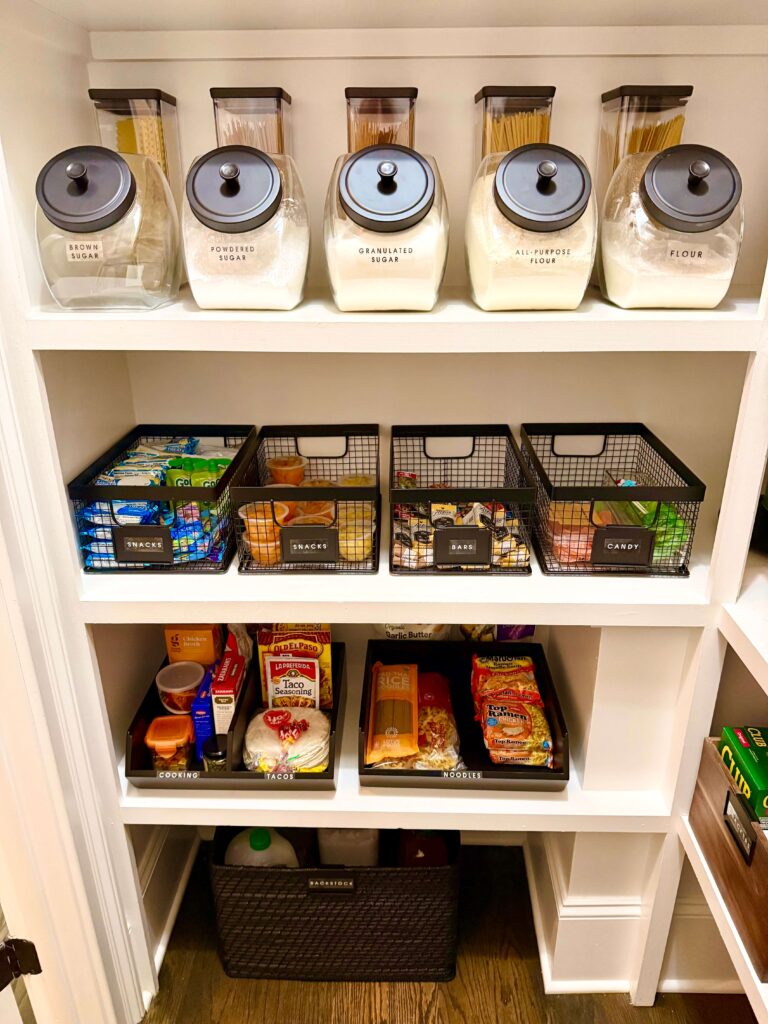
Styling Your Pantry
Choosing bins of the same color adds an additional layer of harmony, giving you a polished look and feel. Neutrals, such as whites and blacks, have a timeless appeal and blend seamlessly together, providing a clean and sophisticated look.
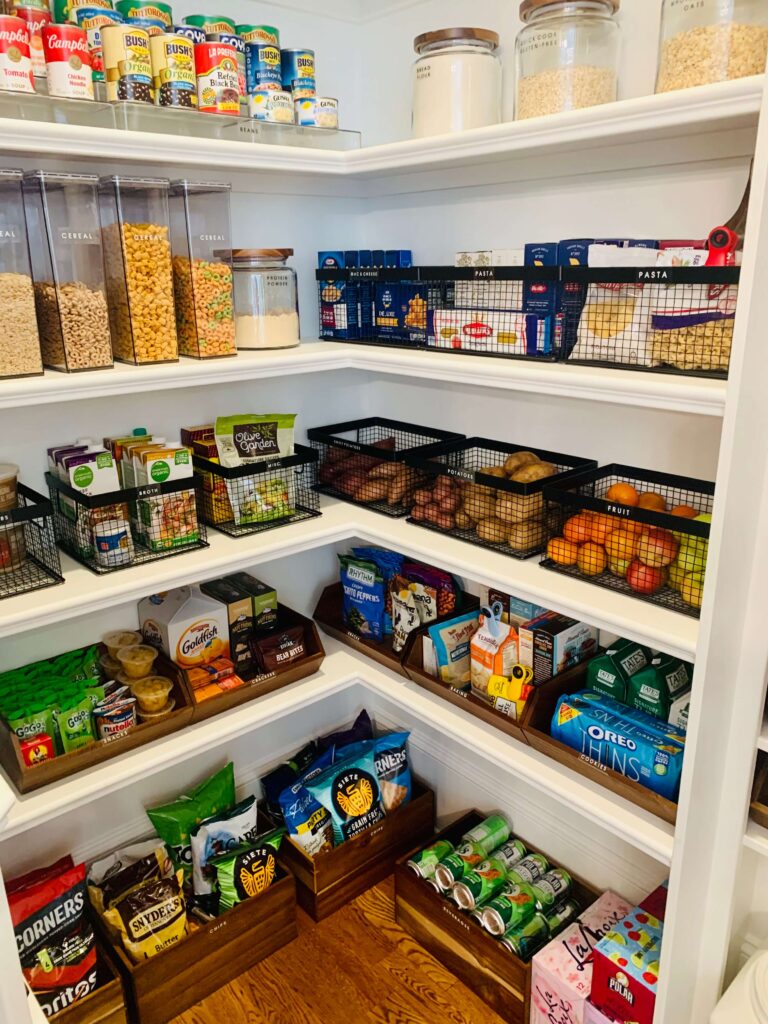
Introducing different textures through varied bin materials not only adds depth to the overall design but also creates a tactile interest that enhances the pantry’s visual appeal.
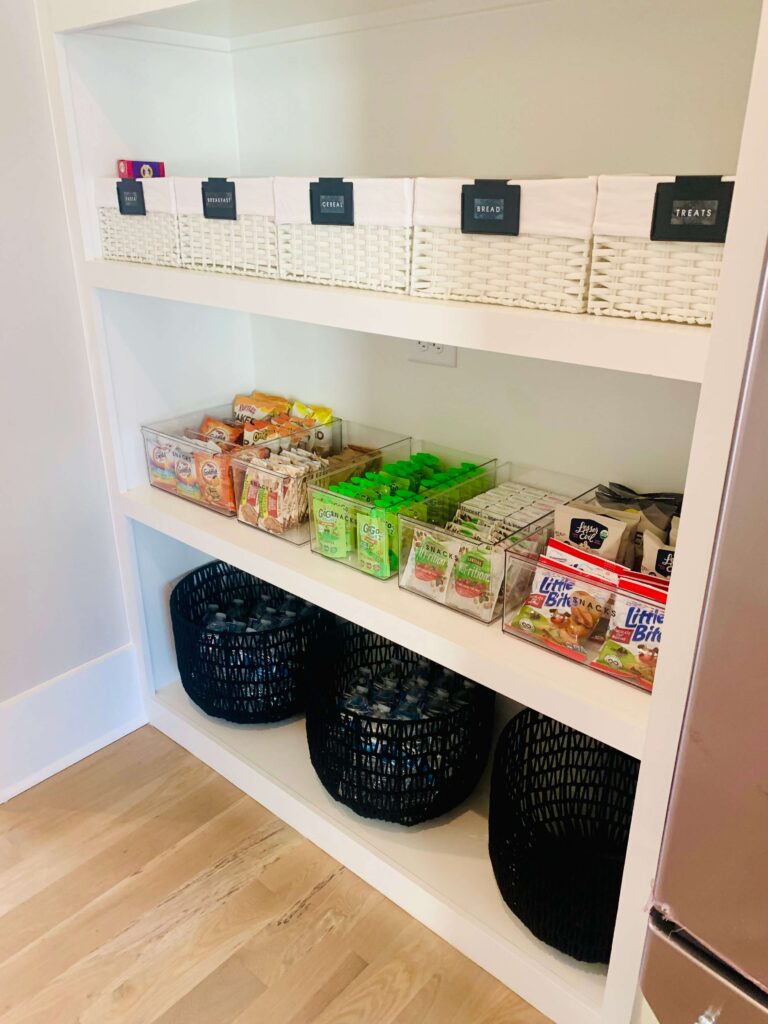
A combination of consistent bin types, color coordination, and thoughtful texture selection transforms a pantry into an organized and stylish space.
5. Label
Effectively organizing your pantry involves several key steps, and one crucial aspect is the proper labeling of storage bins. This step plays a pivotal role in quickly identifying items, ultimately saving valuable time—something everyone desires.
When it comes to wicker bins, visibility can be a challenge, making labeling even more essential. While some bins come with built-in labels, many don’t, prompting the need for external solutions. The Container Store offers practical bin clip labels that can be conveniently applied to almost any type of bin.
Exploring various labeling methods, two highly recommended approaches stand out. Firstly, utilizing Sharpie oil-based markers on clear label tape provides a versatile and legible option. However, caution is advised when considering writing directly on the bin, as ink removal can be challenging. Magic erasers may work, but the process involves vigorous scrubbing.
Alternatively, employing a label maker presents a clean and clear solution, ensuring that labels are easily readable. Mastering the art of how to organize a pantry involves paying attention to such details, creating an efficient and visually appealing storage space.
Steer clear of chalk labels and here’s why:
- They leave a “ghosting shadow”. You can still see the previous word there even when you write on a new one.
- They fade. When you are grabbing a bin out of the pantry or putting it back, you are obviously using your hand, over time it fades.
Stick with the Sharpie oil-based markers or a label maker.
6. Maintain
This step is just about as important as labeling. Now that your space is organized, don’t let all that work go to waste! Use the system you have created. If you find things starting to creep out of the bin or it’s not getting used, re-evaluate it and see what needs to be changed.
- Weekly meal planning will help keep the pantry in order as you’ll need to check the ingredients you have.
- Check canned goods a few times a year for expiration dates.
- Holidays/Celebrations is when the pantry tends to become fuller. Go through it before the madness arrives.
PANTRY HABITS
Establishing habits is essential for success, serving as the cornerstone for creating structure and routine in various aspects of life, including how to organize a pantry. These habits contribute to a sense of stability and predictability, effectively streamlining decision-making processes and conserving valuable mental energy for more critical tasks.
The first habit is to put away all the food immediately in the appropriately labeled bin.
How you put away all of the food will depend on your system. For example. some of you may have a dedicated bin for snacks and you keep them in the box. Others, may take out the snacks from the box and keep them in the bins individually wrapped. I prefer taking it out of the box because boxes tend to take up more space.
The second habit is to prep any foods that will make your life easier.
This means taking grapes off the stem so you can quickly grab a handful of them to eat or put in a snack bag. Cutting off the tops of strawberries so they are ready to eat when you need them. Pulling apart bananas so you can grab one quickly on the go. These are small steps that don’t seem like a big deal but they will help you eat healthier and make your week run smoother.
It’s annoying to have to do these little tasks during the week because your plate is already full. Doing the small things will help you have a more productive, healthy week.
Product Recommendations
When getting into the task of how to organize a pantry, selecting the right products can make a significant difference.
These wicker baskets are sturdy and durable, and add some style to your pantry.

Using this clear storage bin will help you see what you have stored in there. You can keep the items in the packaging such as pasta or you can take them out of the box and store them individually, such as fruit snacks or cereal bars.
You can also use them in the refrigerator to store fruit, vegetables, or condiments. These bins work great for the pantry, refrigerator, and freezer.
These bin clip labels are perfect for wicker baskets and bins because they latch on well and stay there. You can label them with a dry-erase marker, use the label it comes with and write on there, or use clear adhesive tape and write on there with a Sharpie oil-based marker. The last method is the one I prefer best.
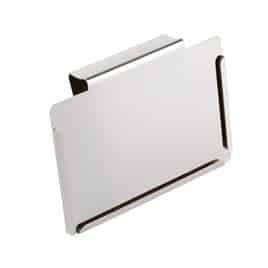
OXO Good Grips 10-Piece Airtight Food Storage
For a sleek and modern look, opt for stackable canisters like those offered by OXO. These airtight containers keep ingredients fresh while optimizing shelf space.
HOW LONG WILL IT TAKE
Successfully tackling the task of how to organize a pantry can be challenging, especially when balancing the demands of a full-time job and a household with kids. To navigate this challenge effectively, it’s crucial to find a dedicated time without distractions.
If your weekdays are consumed by a 9-5 job, consider allocating a weekend morning to this endeavor. Choosing a time when you’re not overwhelmed with other commitments ensures that you can approach the task with a full tank and maximize your productivity.
Drawing from our experience in organizing pantries regularly, the time invested in the process varies depending on the pantry’s contents. A team of 2-3 organizers typically spends anywhere from 3 to 12 hours, double the amount of time you think it’ll take you.
FINAL THOUGHTS
By following these steps, you’ll learn how to organize a pantry that brings harmony and order. Having a pantry that is organized will bring you joy.
You’ll enjoy opening it up, you will eat healthier and you will save money. Purge your pantry, get the right bins to keep it organized, label it, and maintain it.
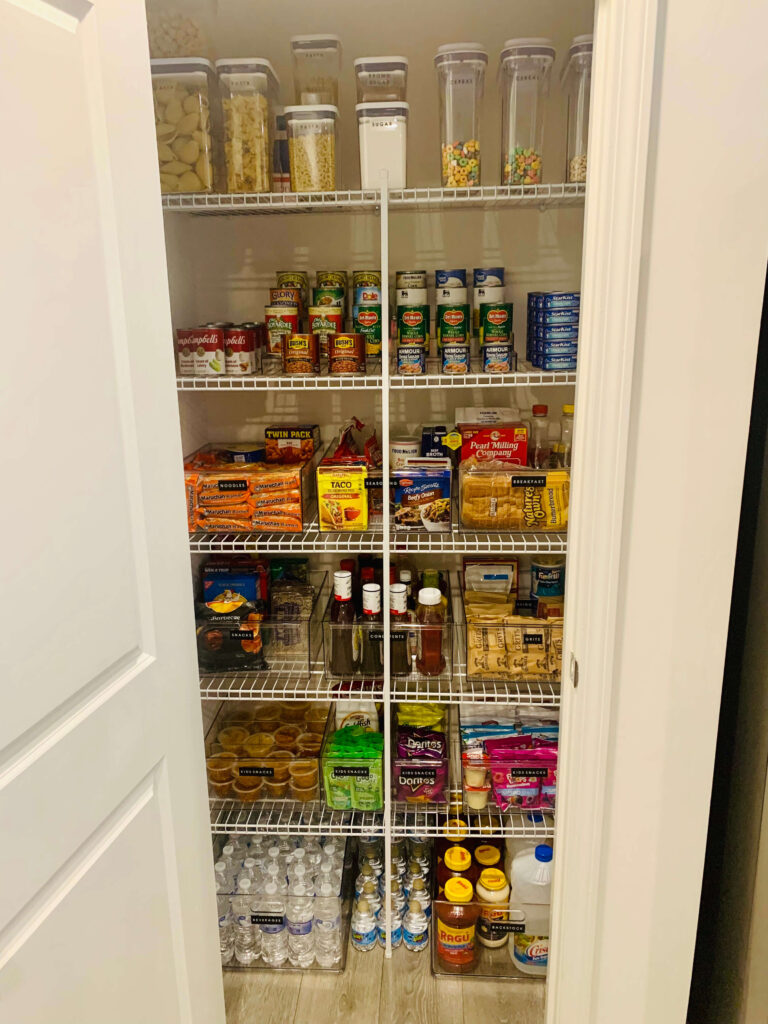
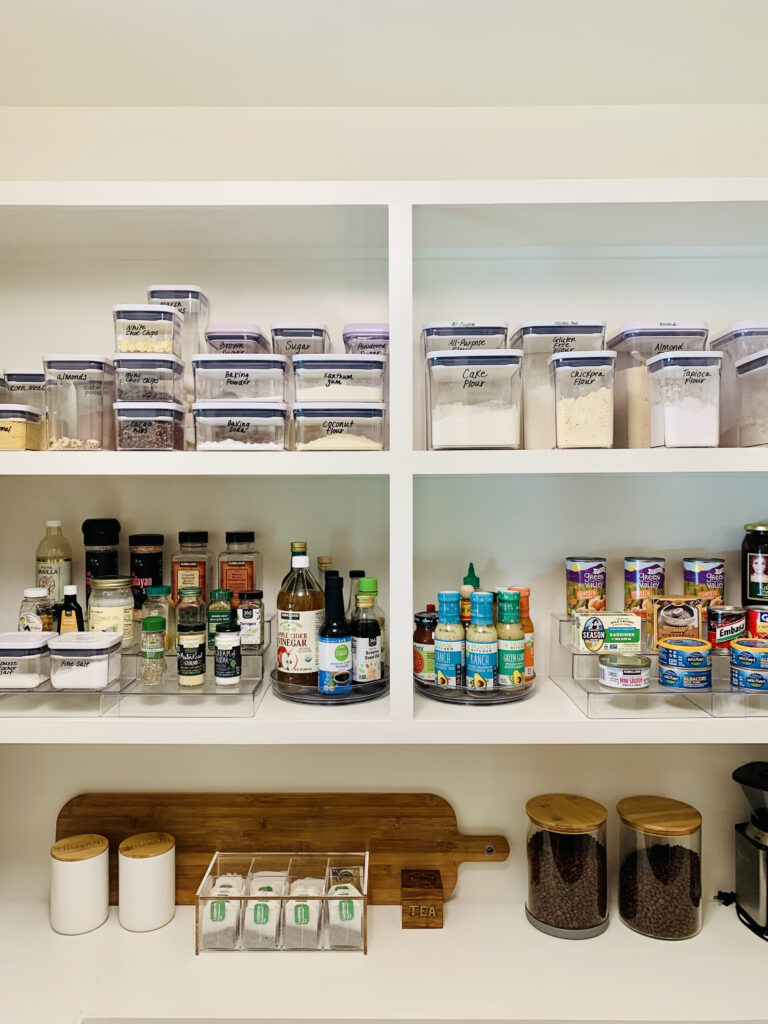
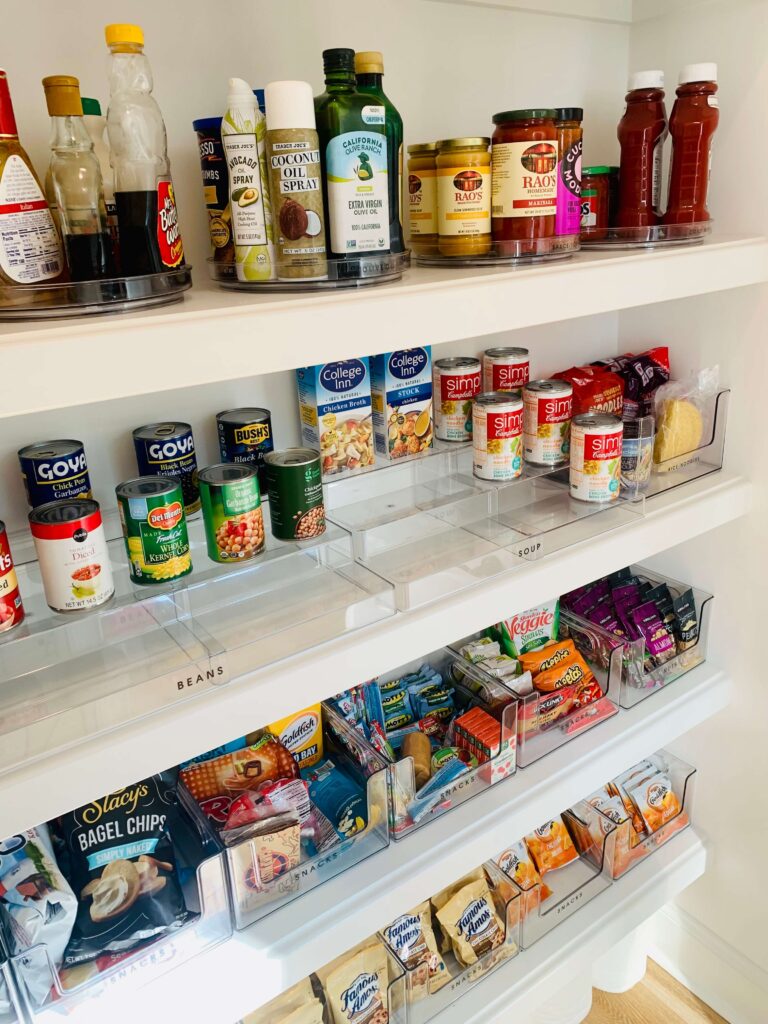
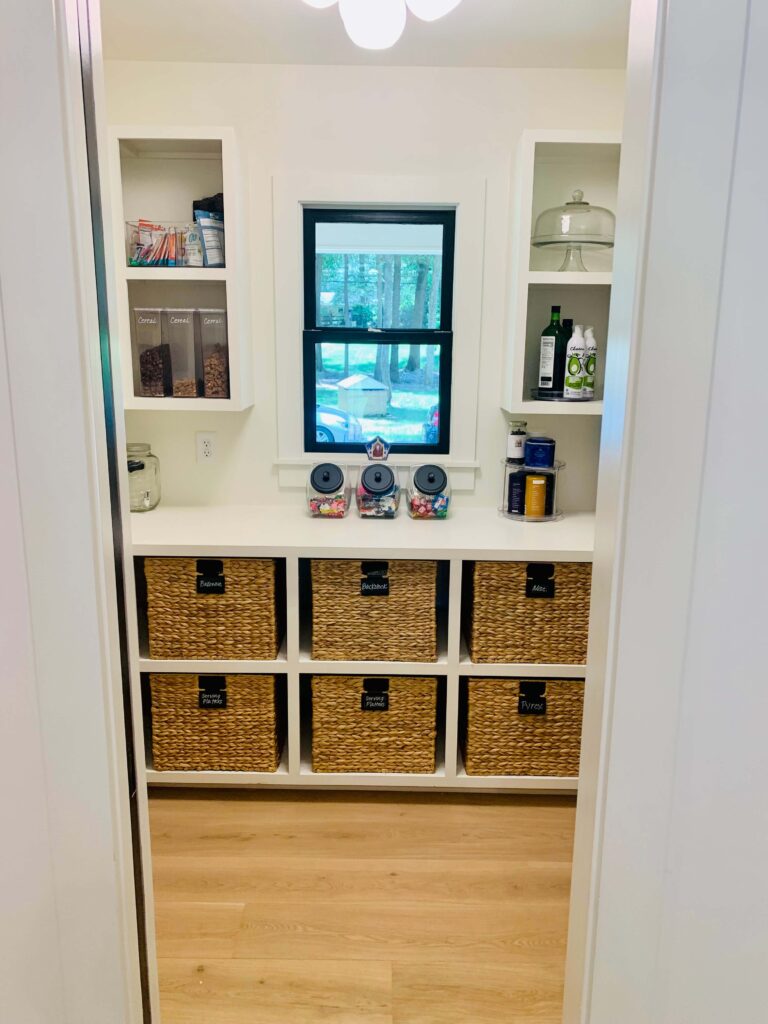
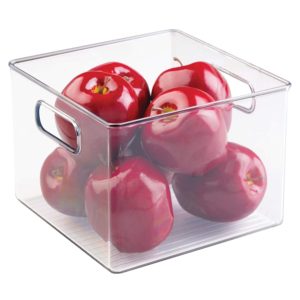
+ show Comments
- Hide Comments
add a comment